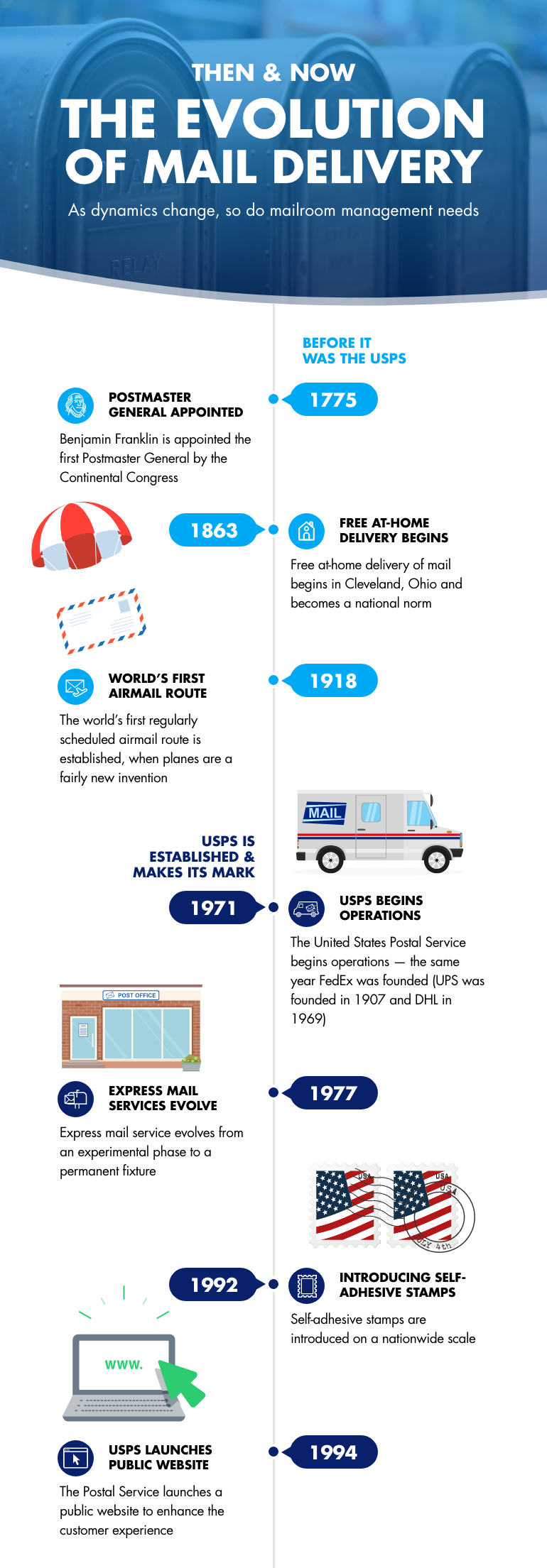How Will Mail Delivery Change In The Return To the Office?


When the U.S. postal system was established more than two centuries ago, the idea was to bind scattered populations together and build a sense of community. Today, a modernized postal service continues to foster such connections between organizations and individuals alike.
While many of today’s communications happen via email or through other online platforms, physical mail continues to play an integral role in a professional and personal environment. Senders can stand out from all of the noise in overcrowded email inboxes, while recipients will appreciate the personalized nature of the mail and having something they can physically hold.
Alongside growth of the USPS and advancements in their operations, other delivery providers have emerged as well — UPS, FedEx, and DHL, to name a few. In a highly digitized world where more purchases are happening online, these providers along with the USPS are seeing an uptick in packages delivered. And these numbers are anticipated to rise year over year.
So what does all of this mean for mailroom management at companies and universities?
As the influx and outflow of mail increases, organizations must have the technology in place to help receive, track and distribute mail in an efficient manner. That way, you can offer the same level of service to mail recipients that they would expect to receive from their shipping providers.

While some mail volumes decrease, others grow
In 2011, the USPS first-class mail volume was 72.5 billion pieces. That same year, their shipping and package volume was 3.3 billion.
In 2020, the USPS first-class mail volume dropped to 52.6 billion. Meanwhile, their volume of shipping and packages spiked to 7.3 billion — with e-commerce growth being the main catalyst.
Growing concerns over package safety
According to Postal Inspection Service data, mail theft rose from around 25,000 in 2017 to 177,000 as of August 24, 2020. (That’s a 600% increase.)
Between March and July of 2020, 1 in 5 Americans reported a stolen package — losing an average of $106 from porch piracy.
New destinations, new demands
As of 2018, the average mailroom handled 500 to 1,000 packages a day. With more personal packages sent to the workplace — and a rise in interoffice mail as employees return to the office — that number is anticipated to rise.
While employees expect their packages to be secure in the office, they also desire convenience. In 2020, 87% of consumers said they want businesses to keep offering contactless pick-up options — a trend that will also carry over into the workplace.
iOFFICE mailroom management software has helped organizations maintain the efficiency and integrity of mail operations since 2002. Learn more.
